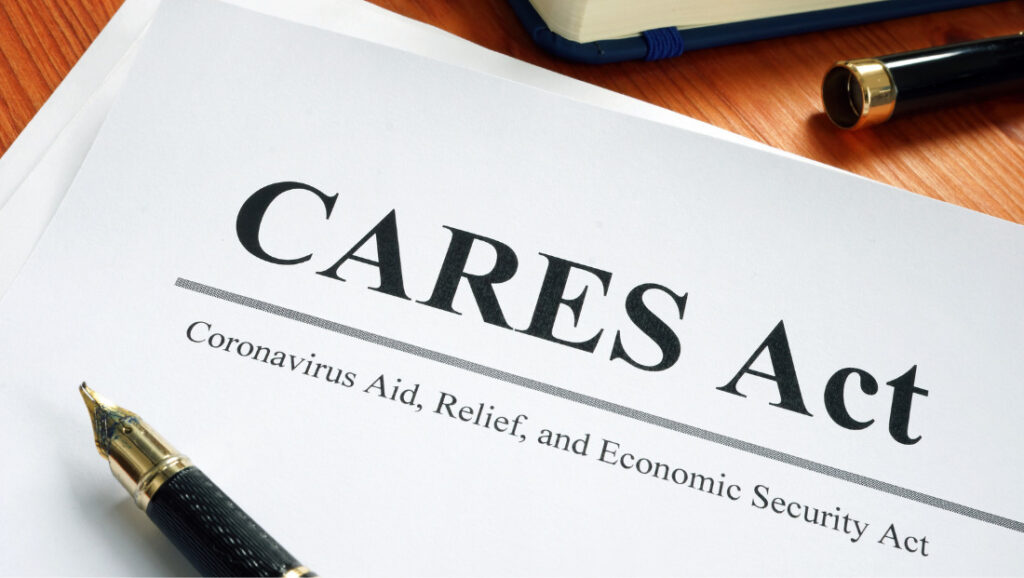Just the facts
- The automatic deferment of federal student loan payments with no interest accrual is set to end January 31, 2022.
- If you have made payments on federal student loans during the deferment period (since March of 2020) you can ask for a refund of those payments.
- There are other benefits of the CARES Act to doctors and students including expanded employer benefits with tax breaks towards student loans.
CARES Act for Healthcare Professionals: How CARES affects medical and dental students, residents, fellows, and practicing doctors
President Joe Biden ran on a platform that recognized the need for an overhaul of the student debt crisis in the U.S. For reference, the average medical school graduate finished school in 2020 with $241,600 of total debt. At the same time, the average dental school graduate finished school with $304,842 in debt. During the 2020 election season, President Biden campaigned on several policy proposals that would potentially impact physicians, dentists, and residents with student loans. Here are the primary components of his initial platform:
- Expansion of Public Service Loan Forgiveness: Instead of full forgiveness after 10 years, Biden supported legislation to allow physicians in the program to have half their federal loans paid off at the five-year mark and the other half paid off at the 10-year mark.
- Future reduction in PSLF program: Rather than full forgiveness, future med school graduates in the program would earn $10,000 per year for up to five years of service (with a maximum benefit of $50,000).
- Pell grant expansion: Biden promoted doubling the value of the grants, with annual increases to account for inflation.
Nearly one year into his presidency, Biden has yet to announce concrete plans for any of these campaign promises. But he has, to date, cancelled $11.5 billion in federal student loan debt, focusing on Americans with disabilities and those with degrees from now-closed institutions.
Add those to the provisions from the CARES Act that affect any medical professionals with student debt, and there are a lot of changes to keep up with in 2021 and beyond.
What made it into the CARES Act?
On March 27, 2020, former president Donald Trump signed the CARES Act into law. The $2 trillion piece of legislation provided the first set of sweeping relief measures early in the COVID-19 pandemic. It also included several provisions that have impacted student loans for those with medical and dental school debt outstanding.
Here is a brief overview of the CARES Act relevant to student loans:
Deferment of federal student loans and waived interest
One of the hallmark pillars of the CARES Act was the automatic deferral of federal student loan payments. Additionally, interest accrual was waived during this period. The benefit was originally set to expire on September 30, 2020, but President Biden set a final extension through January 31, 2022. Note that this program does not apply to any private student loans used for school.
Another important thing to note is that any payments made on a federal loan while the CARES payments pause is still in effect can be refunded. This could be extremely useful for borrowers who might have made automated payments by accident or were continuing to make monthly payments but find themselves in need of additional funds.
Suspension of collections process for defaulted federal student loans
The CARES Act also stopped the collections process for any federal student loans that were in default, including wage garnishment. This program has also been extended to the January 31, 2022 deadline.
More applications for those with medical or dental school loans
In addition to relief on student loan payments and expanded eligibility for federal loans while studying abroad, the CARES Act included more help for both practicing physicians and dentists, and also those in training as residents or fellows who have outstanding school debt, which we outline below:
Employer loan assistance
The CARES Act allows extra benefits for employers that can help healthcare workers pay off some of their student loans. An employee can receive up to $5,250 each year from their employer, who can then deduct that payment from their income and lower their taxable income. The CARES Act doesn’t provide funding for the loan assistance, merely a tax incentive for employers who want to offer the benefit.
The truth behind the CARES Act and student loan forgiveness
The CARES Act doesn’t actually forgive any student loans (federal or private). Instead, it enacted a temporary pause on federal student loan payments and interest accrual to provide relief to borrowers during an extended period of economic uncertainty. All federal borrowers were automatically enrolled in the deferment.
When the final extension ends on January 31, 2022, everyone that didn’t make payments during this timeframe will resume payments on the same balance they had when the program began on March 13, 2020. However, if you were in an income-driven repayment plan, your income certification may have lapsed. If this is the case you should look to refile your annual certification prior to the end of the CARES Act forbearance.
2021 update on the Public Service Loan Forgiveness program
There were no changes to the Public Service Loan Forgiveness (PSLF) program under the CARES Act. This program forgives federal Direct loans for medical and dental school graduates who spend 10 years working in a 501(c)(3) non-profit organization or a government organization.
However, the U.S. Department of Education recently announced a revamp of the PSLF program to help boost the low success rate of participants. Updates include:
- Counting payments made while working for an eligible employer, but enrolled in the wrong loan program (including payments for Federal Family Education Loans).
- New rules in progress for active-duty service members with periods of deferments and forbearance.
- New review of previously denied applications. This includes counting payments under previously ineligible repayment plans.
How much was the CARES Act direct payment to active students?
The CARES Act kicked off a series of federal stimulus payments (called economic impact payments) for eligible individuals. While this doesn’t amount to student loan forgiveness, the funds could potentially be used to pay down student loan balances:
- CARES Act stimulus (March 2020): $1,200 per individual. Additional $600 for each qualifying child. Phase-outs began at $112,500 for single tax filers and $150,000 for married filing jointly.
- Coronavirus Response and Relief Supplemental Appropriations Act (December 2020): $600 per eligible individual. Additional $600 for each qualifying child. Same phase-out schedule as CARES Act.
- American Rescue Plan Act (March 2021): $1,400 per individual. Additional $1,400 for each dependent of all ages. Similar phase-out schedule.
Final thoughts
Navigating student loans beyond medical and dental school is a challenge for physicians and dentists and every stage in their career. Follow Panacea Financial to stay up-to-date on the latest legislative updates that could impact your student loan repayment process.
Panacea Financial, a division of Primis. Member FDIC.




